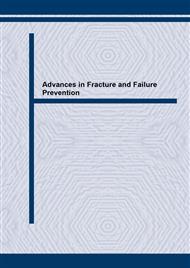p.681
p.687
p.693
p.699
p.705
p.711
p.717
p.723
p.729
2D Vector Cellular Automata Model for Simulating Fracture of Rock under Tensile Condition
Abstract:
Based on the cellular automata of the plane truss structure, a 2D cellular automata model is presented to simulate the fracture of rock at meso-level. Cellular automata are made up of cell, states, lattice, neighbor and rule. Rock is divided into lattice in which each lattice point presents a cell. Each cell is assumed to connect with several cells, which are called as its neighbors, in virtue of truss elements. The truss elements can adopt some different simple local laws, i.e. constitutive law, which may be elastic or elastic-plastic and the simple fracture rule. It also can adopt different mechanical properties, which present their heterogeneity and anisotropy. This model can make full use of the advantages of cellular automata such as its intrinsic parallelism, localization and so on. In the meantime, as a powerful tool to analyze the nonlinear, complex system, cellular automata can be used to study the nonlinear, complex fracture process. The model is used to simulate the direct tensile of the rock plates, the complete fracture process and the stress-strain curves are attained which are accordance with the experiment.
Info:
Periodical:
Pages:
705-710
Citation:
Online since:
April 2004
Authors:
Keywords:
Price:
Сopyright:
© 2004 Trans Tech Publications Ltd. All Rights Reserved
Share:
Citation:


